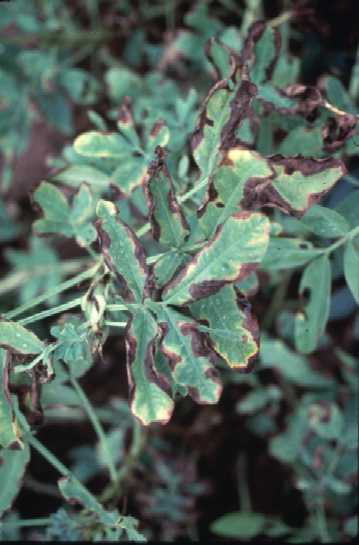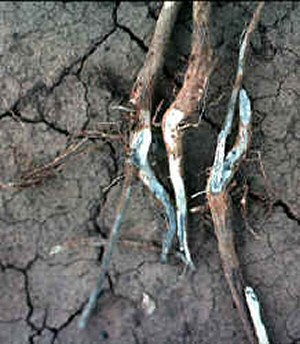Charcoal Rot
 Causal Agent
Causal Agent
Macrophomina phaseolina, a fungus
Hosts
Soybeans.
Symptoms

Control
Since this disease is associated with stressed plants, incidence of charcoal rot can be reduced through proper fertilization, weed control, and irrigation. Crop rotation with poor hosts, such as cotton or small grains, for one to two years, can help in minimizing yield loss due to charcoal rot. There are no known resistant varieties: however, varieties that do not bloom and set pods during the normally dry months of July and August are more likely to escape infection by charcoal rot. There are no known chemical controls. Please contact your local county extension office for current information.

